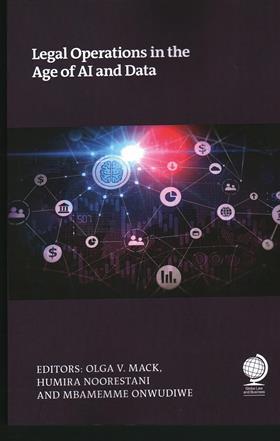Legal Operations in the Age of AI and Data
Olga V. Mack, Humira Noorestani and MbaMemme Onwudiwe
£149, Global Law and Business
★★★✩✩
The stated aims of this book (as set out in its introduction) would not sound out of place in a trailer for a Hollywood blockbuster. It claims to offer practical strategies in the age of AI for ‘a future where legal decisions are informed by a fusion of human expertise and data insights’.
Consisting of over 40 short articles, written by authors drawn from (mostly US-based) law firms, in-house legal teams, tech innovation companies and academic institutions, the book is divided into three parts.
Part One gives a brief overview of the kind of technology which is currently available. The book explores the ways in which technology can assist in practising law (for example, through the automation of research, drafting and e-discovery). It also examines the business of running a law firm generally (via systems which assist with tasks, such as unlocking KPIs and supporting vendor and contract management). The processes needed to ‘effectively leverage these newfound capabilities’ are dealt with in Part Two. Part Three addresses a problem which will be all too familiar to those charged with any form of digital transformation: namely, how to get staff on board with new systems and procedures, especially when people may perceive that any changes pose an existential threat to their jobs.

The exponential rate at which AI is both developing and impinging on all aspects of our lives means that we should all be starting to work towards (at the very least) a passing familiarity with what AI actually is and how we can make it work for us. This book will help bridge any gaps in a reader’s knowledge, but there are a few issues which may mean that it is not the best option for all of its intended audience. In Part One, a number of the authors address almost identical issues and topics, when setting out the background to their arguments, solutions or conclusions. This can be explained by the fact that all of the chapters are self-contained, as opposed to building on any kind of narrative(s) developed within the preceding chapters. So some readers may stop reading at an early stage if they feel that a piece is simply repeating what they have already read (possibly more than once).
In addition, a few of the articles in both Part Two and (in particular) Part Three only appear to have relatively tenuous, and in some cases no, links to the book’s main theme (specifically AI and the use of data). These include the chapters on the Top 10 Questions which legal teams should ask if they are serious about diversity, equity and inclusion, and the Power of Authenticity in Law, neither of which (though well-written and argued) make any reference to IT, let alone AI.
At £149, this is an expensive book, even if it were to be read cover to cover and many of its recommendations adopted. For those who simply want an initial overview of what AI is, and what it can do, there are far cheaper books which do just that.
Sean Gordon is a risk and compliance solicitor































No comments yet